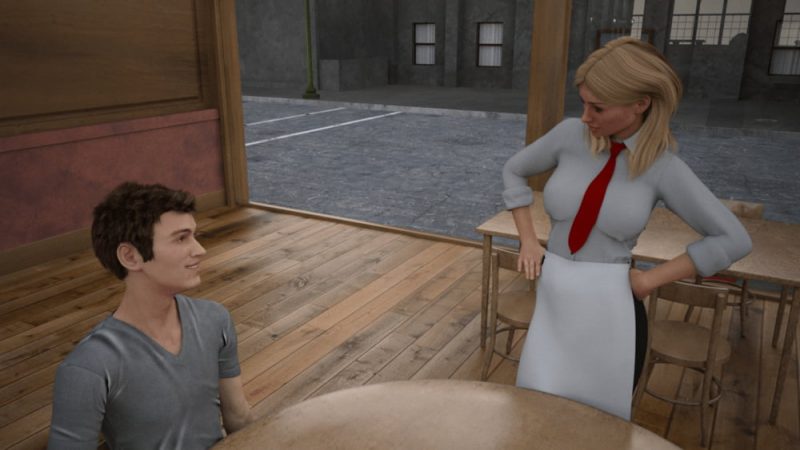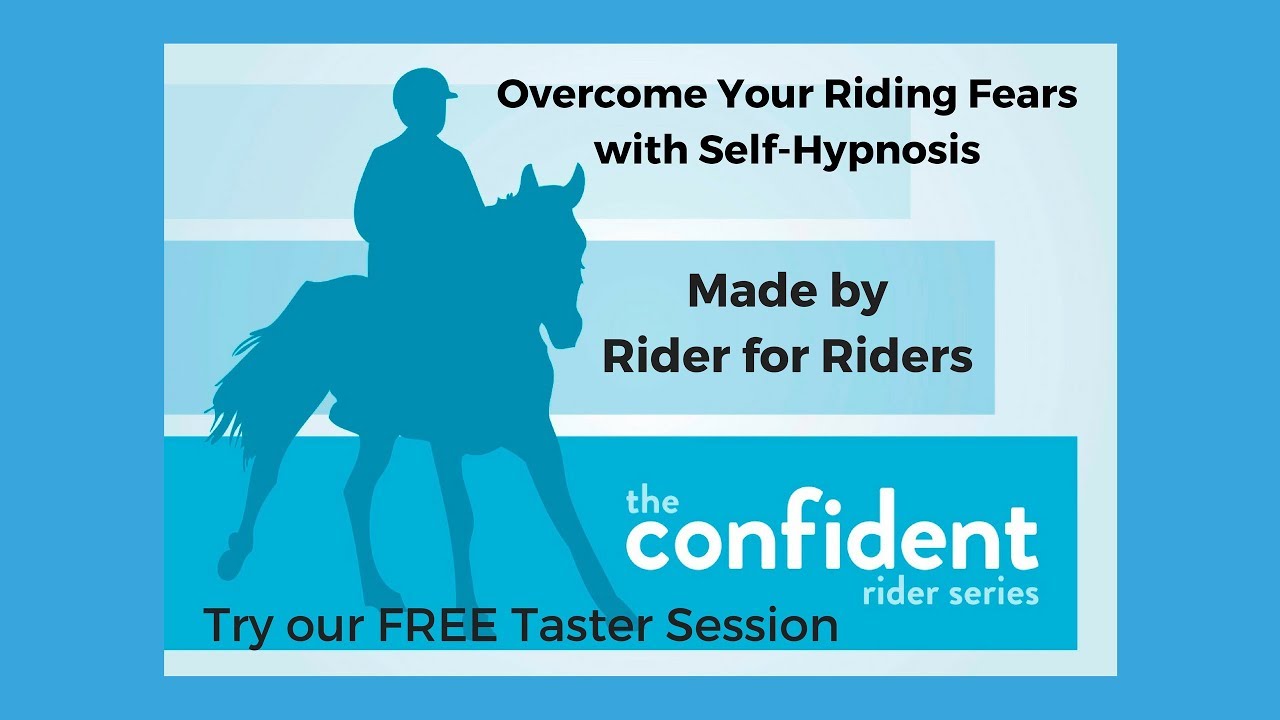Contents
- 1 The Importance of Establishing a Routine
- 2 Creating a Safe and Comfortable Environment
- 3 Utilizing Natural Calming Remedies
- 4 Implementing Desensitization Exercises
- 5 Building Trust through Positive Reinforcement
- 6 The Role of Proper Horse Nutrition
- 7 Q&A:
- 7.0.1 What are some effective strategies to calm a nervous horse?
- 7.0.2 How can I establish a calm and confident presence around my horse?
- 7.0.3 What are some desensitization techniques that can be used with a nervous horse?
- 7.0.4 How can exercise and positive reinforcement training help a nervous horse?
- 7.0.5 Are there any calming supplements or aromatherapy options that can help calm a nervous horse?
- 7.0.6 What are some signs that a horse is nervous?

Have you ever found yourself in a situation where your horse suddenly becomes nervous and starts to act out of control? It can be a scary experience, and many riders don’t know how to handle it. Justine, an experienced equine psychologist, knows exactly what it feels like. She’s seen it all – from horses bolting and spooking at the slightest movement, to riders fearing for their safety.
Yesterday, Justine decided to take her top mare, Prudential, to an indoor school for a jumping session. The school was big and had plenty of scary objects that might cause Prudential to spook. Justine knew she had to create a safe and controlled environment for Prudential to develop her confidence, so she brought along 5 cookies as rewards.
Prudential started off nervous and jumpy. The moment she entered the indoor school, she noticed all the strange objects and her body tensed up. Justine understood that Prudential’s nervous behavior was a result of her fear of the unknown. She had to find a way to help Prudential relax and let go of her anxiety.
Justine applied a range of effective strategies to calm Prudential and restore her confidence. The first thing she did was desensitization. She slowly introduced Prudential to the scary objects, starting with the least intimidating ones. By exposing Prudential gradually to each object, Justine allowed her to get used to them without being startled. This technique gave Prudential the chance to understand that these objects were not a threat.
The second strategy Justine used was to give Prudential the freedom to move without the pressure of being under control. Justine noticed that when she let Prudential loose in a secure area, the mare became more relaxed and willing to explore. It was as if the sense of being confined was adding to Prudential’s anxiety. Giving her the freedom to move around and investigate her surroundings helped her feel more at ease.
Another strategy Justine employed was positive reinforcement. Whenever Prudential showed signs of relaxation, Justine praised her with a calm and soothing voice. Prudential started to associate this positive feedback with her calm behavior, and it motivated her to continue behaving in a relaxed manner. The cookies that Justine brought along were also used as rewards for Prudential’s good behavior.
By using these strategies, Justine was able to help Prudential regain her confidence and conquer her fears. It wasn’t an easy process, and it took time and patience, but with each session, Prudential started to feel more at ease in the indoor school. Justine noticed that Prudential’s responses became more controlled, and she seemed to enjoy the sessions more.
If you find yourself dealing with a nervous horse, remember that there is always a way to help them. Try incorporating these strategies into your training sessions, and you will notice a difference in your horse’s behavior. Building your horse’s confidence is not an overnight process, but with time and effort, you will be able to create a calmer and more trusting partnership.
The Importance of Establishing a Routine
When it comes to riding a nervous horse, keeping a routine can be crucial in helping them relax and regain their confidence. Horses are creatures of habit, and having a consistent schedule can provide them with a sense of security and structure.
By establishing a routine, you let your horse know what to expect, which can reduce their anxiety and help them feel more at ease. A regular riding schedule can also provide opportunities for desensitization and building trust between the horse and rider.
It’s important to keep notice of your horse’s behavior and patterns, as this can give you valuable insight into their needs and preferences. For example, if you notice that your horse tends to get spooked in particular situations or environments, you can work on desensitizing them to those specific stimuli.
One effective method is to start by introducing them to low-pressure situations and gradually increase the level of challenge. If your horse is afraid of indoor arenas, for instance, you could start by riding them near the entrance where they can still see outside. As they become more comfortable, you can gradually move deeper into the arena until they accept being inside without being nervous.
Another way to build confidence is to focus on exercises that help your horse relax. For example, doing simple exercises at the walk, such as bending and stretching, can help them release tension and become more supple. This can not only help them physically, but also mentally, as they learn to let go of their nervous energy.
It’s also important to give your horse opportunities to experience new things. By exposing them to different situations, such as riding in a group or attending events, you can help broaden their horizons and make them more comfortable in unfamiliar settings. Gradually exposing your horse to new experiences can help them develop trust and confidence in themselves and their rider.
Always remember to praise and reward your horse for their efforts. Positive reinforcement, such as giving them cookies or a pat on the neck, can go a long way in boosting their confidence and associating new experiences with something positive.
In conclusion, establishing a routine is essential when working with a nervous horse. It helps create a sense of familiarity and security, making it easier for them to relax and build confidence. By keeping notice of their behavior and gradually exposing them to new experiences, you can help your horse overcome their fears and become a more confident and willing partner.
Creating a Safe and Comfortable Environment
When it comes to dealing with a nervous horse, creating a safe and comfortable environment is crucial. The behaviour of a horse is often a direct result of its surroundings and the understanding it has of them. If the environment is not conducive to the horse’s well-being, it will become even tenser and more nervous.
One of the first things you can do to create a safe environment is to make sure the horse is in a suitable living space. This means providing ample room for the horse to move around freely and ensuring that it has access to food and water at all times. If your horse is kept in a stable, make sure it is clean, well-ventilated, and well-lit.
Understanding the psychology of horses is also essential. Horses are prey animals, which means they’re naturally more fearful and reactive than predators. They have evolved to be constantly on the lookout for potential dangers, and this can be magnified if they’re in an unfamiliar or scary environment.
By gaining a better understanding of how horses perceive their surroundings, you can adjust your approach to help your horse feel more comfortable and confident. For example, try not to handle your horse in a manner that would make it feel trapped or restrained. Instead, give it freedom to move and express itself.
Another thing you can do to create a safe and comfortable environment is to provide your horse with opportunities for mental stimulation. Horses are intelligent animals, and they thrive when given tasks to solve and things to explore. Providing them with toys, such as treat-dispensing balls or hanging buckets filled with treats, can help keep their minds occupied and prevent boredom.
Adjustable Equipment

In addition to creating a safe environment, using adjustable equipment can greatly help in calming a nervous horse. Using a tight-fitting saddle or bridle can cause discomfort and make the horse more tense. Adjustable equipment, such as an adjustable girth or bridle, allows you to find the right fit for your horse, ensuring its comfort and confidence.
The Power of Positive Reinforcement
Positive reinforcement plays a significant role in building a nervous horse’s confidence. Instead of punishing or reprimanding your horse when it acts fearful or reacts negatively, it’s crucial to reward the desired behaviour. This can be done through treats, praise, or simply allowing the horse to take a break and relax.
By using positive reinforcement, you’re teaching your horse that it can trust you and that nothing bad will happen when it acts calmly. This helps to build their confidence over time and reduces their nervousness in new situations.
In conclusion, when dealing with a nervous horse, it’s essential to create a safe and comfortable environment. By understanding the psychology of horses and providing them with adjustable equipment, mental stimulation, and positive reinforcement, you can help your horse regain its confidence and become a more relaxed and enjoyable partner.
Utilizing Natural Calming Remedies
When it comes to helping a nervous horse, there are various natural calming remedies that can be used to develop trust and restore confidence. One such remedy is the use of desensitization techniques, which can help the horse become more accepting of potentially scary stimuli.
Desensitization involves the gradual introduction of the object or situation that the horse finds fearful or overwhelming. By starting with something less intimidating and gradually increasing the level of exposure, the horse can learn to tolerate and eventually ignore the previously spook-inducing stimuli.
The Process of Desensitization

In order to desensitize a horse, it is important to have a clear understanding of its specific fears and triggers. For example, some horses may be particularly afraid of loud noises or sudden movements, while others may spook at unfamiliar objects or surroundings.
To start the desensitization process, choose a controlled environment in which the horse feels safe and can focus on learning. It can be helpful to work with a professional trainer or experienced rider who can offer guidance and support.
Begin by gradually introducing the horse to the object or situation that causes fear or anxiety. For instance, if the horse is scared of plastic bags, start by showing them a small, empty bag from a safe distance. As the horse becomes more comfortable, gradually move closer and introduce more movement or noise associated with the bag.
Remember to keep the sessions short and positive, rewarding the horse for calm and relaxed behavior. This positive reinforcement helps the horse associate the previously scary stimulus with a sense of comfort and safety.
Natural Calming Supplements
In addition to desensitization techniques, there are also natural calming supplements that can help relax a nervous horse. These supplements are typically made from herbs, minerals, or amino acids that have a calming effect on the horse’s nervous system.
While natural calming supplements can be beneficial, it is important to consult with a veterinarian or equine nutritionist before starting any new nutritional regimen. They can help determine the appropriate dosage and select a supplement that is safe and effective for your specific horse.
It’s important to note that while natural remedies can be helpful, they should not be used as a substitute for proper training and handling. Building trust, understanding the horse’s body language, and consistently practicing good horsemanship are essential components in helping a nervous horse regain its confidence.
In the next section, we will explore the importance of creating a safe and consistent environment for a nervous horse.
Implementing Desensitization Exercises

Desensitization exercises are an effective way to help calm a nervous horse and restore its confidence. By gradually exposing the horse to various stimuli, you can help them become more comfortable and less reactive in different situations.
One approach is to start with objects that the horse is familiar with and gradually work your way up to more challenging items. This could include things like plastic bags, tarps, poles, and other sources of movement and noise. Try to understand what triggers your horse’s fears and gradually expose them to these sources in a controlled environment.
When introducing new stimuli, it is important to start slowly and give the horse enough time to understand and process what is happening. Begin by presenting the item to the horse from a distance, allowing them to observe it without feeling threatened. Reward any signs of relaxation or curiosity with praise, treats, or scratches.
As the horse becomes more comfortable with each item, you can gradually decrease the distance between them and the source of the stimuli. This could involve touching the item to their body or having them walk or stand near it. It is crucial to do this at a pace that the horse can handle, ensuring that they are never overwhelmed or pushed too quickly.
One exercise that can help desensitize a horse to scary objects is the “cookie game.” Start by placing a treat or cookie on a plastic bag or tarp and allow the horse to eat it off the surface. Repeat this exercise several times, gradually increasing the difficulty by placing the cookie on more challenging surfaces or adding more distractions.
Another helpful exercise is the “spooking game.” This involves creating controlled situations where the horse is likely to spook, such as tossing a plastic bag in the air or waving a flag. By gradually exposing them to these stimuli and teaching them how to handle their fear, you can improve their confidence and ability to stay calm in unpredictable situations.
It is important to remember that desensitization exercises should always be done with safety in mind. If you are unsure how to handle a particular situation, it is best to seek guidance from a professional trainer. They can provide you with the necessary knowledge and skills to help your horse overcome their fears and build confidence.
In conclusion, implementing desensitization exercises is an essential part of helping a nervous horse regain its confidence. By gradually exposing them to different stimuli and teaching them how to react calmly, you can improve their overall behavior and make riding and handling a more enjoyable experience for both horse and rider.
Building Trust through Positive Reinforcement
When it comes to handling a nervous horse, building trust through positive reinforcement is key. By using this approach, you can help your horse feel more comfortable and confident in various situations.
One important thing to keep in mind is that horses are highly sensitive to their environment and the events happening around them. Even the smallest thing can sometimes make them feel tense or nervous. Older horses, in particular, may have had negative experiences in the past that have affected their confidence.
With positive reinforcement, you can work on understanding your horse’s behaviour and adjust your approach accordingly. Whatever the situation may be, it’s important to stay calm and patient. By giving your horse treats, praise, or rewards when they respond positively or perform desired behaviours, you can create a positive association and build trust.
For example, let’s say you’re working with a horse that is nervous about jumping. Instead of forcing it to jump, you can start by introducing the jump in a non-threatening way. Try desensitization exercises, such as walking the horse over poles or introducing smaller obstacles. As your horse becomes more comfortable, gradually increase the difficulty level.
6 Tips for Building Trust through Positive Reinforcement:
- Use treats or cookies to reward your horse’s calm and relaxed behaviour.
- Take it slow and be patient when introducing new or potentially scary objects or situations.
- Use desensitization exercises to gradually expose your horse to spookier or more challenging scenarios.
- Provide consistent and clear cues to help your horse understand what is expected of them.
- Work on developing straightness in your horse’s movement, as this can help them feel more confident and balanced.
- Consider using innovative products like the “Protechmasta” saddle pad, which helps keep horses relaxed and comfortable during training and performance.
By following these tips, you can help your horse overcome their nervousness and build trust and confidence. Remember, every horse is different, so it’s important to be flexible and adjust your approach as needed. With time and patience, you’ll see your horse become more relaxed and enjoyable to work with.
The Role of Proper Horse Nutrition
Proper nutrition plays a crucial role in the overall well-being and performance of horses. Just like humans, horses require a balanced diet to thrive and maintain good health. With a well-rounded and nutritionally balanced diet, horses are more likely to maintain a calm and relaxed disposition, reducing the chances of them becoming nervous or spooked.
When a horse is properly nourished, it has the energy and nutrients necessary to perform at its best. This includes being able to canter smoothly and maintain straightness while jumping or performing other tasks. A balanced diet with the right combination of carbohydrates, proteins, fats, vitamins, and minerals can support a horse’s physical and mental well-being.
Many riders may not realize that nutrition affects not only the physical but also the psychological aspect of a horse’s behavior. Certain nutrients can have a calming effect on a horse’s nervous system, helping it to relax and remain focused. For example, magnesium and B vitamins are known for their calming properties and can support a horse’s overall mental well-being.
Feeding Routine
Establishing a consistent feeding routine is essential for horses. Feed them at the same time every day, preferably in smaller portions. This routine helps create a sense of security and stability for the horse, reducing stress and anxiety that can contribute to nervousness. Giving the horse small treats or cookies throughout the day can also help create positive associations and promote relaxation.
The Role of Protexchmasta
Protexchmasta is a renowned brand that offers adjustable horse wear designed to help horses relax and feel more comfortable. Their range of blankets, sheets, and hoods utilize innovative technology to provide therapeutic benefits. The ceramic-infused fabric helps increase blood circulation and relaxes tense muscles, aiding in reducing anxiety and tension. Protexchmasta products also protect horses from outside distractions, like insects and unpredictable weather conditions.
Many riders have claimed that Protexchmasta products have helped their horses feel more chilled out and focused. By using Protexchmasta, riders can help their horses feel safer, more secure, and less likely to spook or become startled by scary objects or noises.
Working with Nervous Horses

When working with nervous horses, it is important to start slowly and gradually expose them to new stimuli. Begin with desensitization exercises, introducing them to objects or situations that might normally make them tense or spooked. These could include plastic bags, umbrellas, or even harmless loud noises.
During training sessions, always keep the horse’s attention and focus on you. Avoid sudden movements or loud noises, as these can startle the horse and hinder their learning process. Patience and consistency are key, as nervous horses may take longer to adjust and overcome their fears.
In conclusion, proper horse nutrition is a vital component in maintaining a calm and confident horse. By providing a well-balanced diet, establishing consistent feeding routines, and utilizing innovative products like Protexchmasta, riders can help their horses feel more relaxed and focused. Additionally, gradually exposing horses to new stimuli and working with them patiently will contribute to their overall well-being and help build their confidence.
Q&A:
What are some effective strategies to calm a nervous horse?
There are several strategies you can use to calm a nervous horse. First, try to establish a calm and confident presence yourself. Horses are highly sensitive to their surroundings and can pick up on your emotions. Take slow, deep breaths and maintain a relaxed posture. Second, create a calming environment by reducing any potential sources of stress or noise. Provide a quiet, secure space for your horse to relax in. Third, use desensitization techniques to gradually expose your horse to stressful or unfamiliar stimuli. Start with something small, like a plastic bag, and gradually increase the difficulty. Fourth, try using aromatherapy or calming supplements designed for horses. Some scents, like lavender or chamomile, can have a soothing effect on horses. Finally, consider incorporating regular exercise and positive reinforcement training into your horse’s routine. Physical activity can release tension and help your horse regain confidence.
How can I establish a calm and confident presence around my horse?
Establishing a calm and confident presence around your horse is crucial for helping them relax. First, take slow, deep breaths and focus on staying centered and present in the moment. Horses are very attuned to their surroundings and can pick up on any tension or anxiety you may be feeling. It can also help to visualize yourself as a calm and confident leader. Imagine yourself radiating with a sense of calm and assertiveness. Maintaining a relaxed posture and moving slowly and deliberately can also signal to your horse that you are in control and that there is nothing to fear.
What are some desensitization techniques that can be used with a nervous horse?
Desensitization techniques can be highly effective in helping a nervous horse overcome their fears and build confidence. One technique is to introduce your horse to a stressor in a gradual and controlled manner. Start by exposing your horse to a low-intensity version of the stressor, such as a small plastic bag, and reward them for remaining calm. Gradually increase the difficulty over time, exposing your horse to more challenging stimuli. Another technique is to use counter-conditioning, where you pair the stressor with a positive experience, such as a treat or scratch. This helps your horse associate the stressor with something pleasurable, reducing their fear response. It’s important to always work at your horse’s pace and not push them too quickly, as this can cause more anxiety.
How can exercise and positive reinforcement training help a nervous horse?
Regular exercise and positive reinforcement training can be beneficial for a nervous horse in several ways. First, exercise helps release endorphins, which are natural mood boosters that can help your horse relax and feel more confident. It also helps burn off excess energy, reducing the likelihood of anxious behaviors. Additionally, positive reinforcement training helps build trust and confidence between you and your horse. By rewarding desired behaviors with treats, praise, or scratches, you can help your horse associate certain actions with positive outcomes. This can help them feel more secure and less anxious in new or challenging situations.
Are there any calming supplements or aromatherapy options that can help calm a nervous horse?
Yes, there are calming supplements and aromatherapy options available that can help calm a nervous horse. Some supplements contain ingredients like magnesium, thiamine, or tryptophan, which are known for their calming effects. These supplements can help reduce anxiety and nervousness in horses. Aromatherapy is another option to consider. Certain scents, such as lavender or chamomile, can have a soothing effect on horses. You can use essential oils or aromatherapy sprays designed specifically for equine use. However, it’s important to consult with a veterinarian before using any supplements or aromatherapy on your horse to ensure their safety and effectiveness.
What are some signs that a horse is nervous?
Some signs that a horse is nervous include sweating, trembling, excessive movement, pinned ears, wide eyes, and an increased heart rate.
